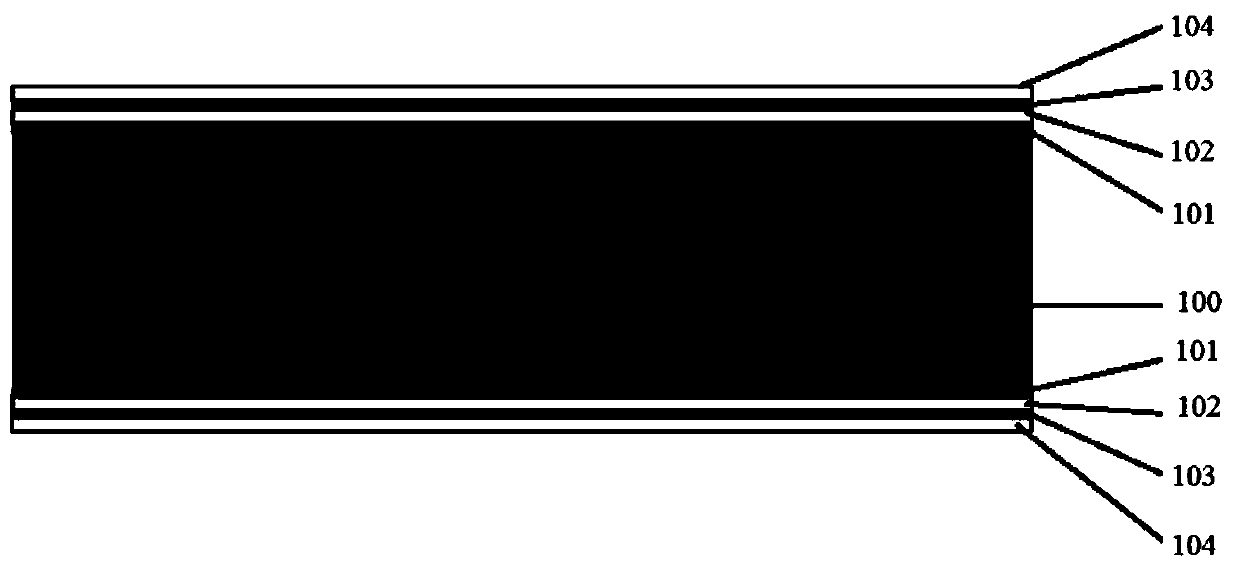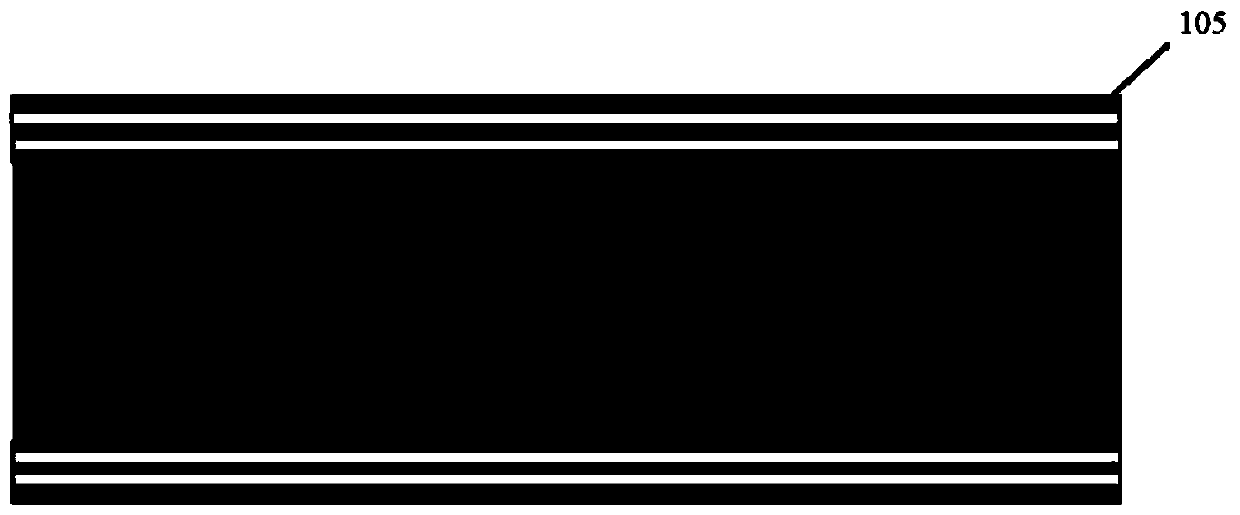Glass corrosion composite mask structure and glass corrosion method
A composite mask and glass technology, applied in the field of microelectronics, can solve the problems of high cost, weak bonding force between glass and silicon wafer, large lateral corrosion of glass, etc., and achieve the effect of convenient setting.
- Summary
- Abstract
- Description
- Claims
- Application Information
AI Technical Summary
Problems solved by technology
Method used
Image
Examples
Embodiment 1
[0037] Such as figure 1 As shown, according to an embodiment of the present invention, a composite mask structure for glass corrosion is provided, including: a first metal primer layer 101, a first metal layer 102, and a second metal primer layer 103 arranged sequentially from a glass substrate 100 , the second metal layer 104 and the photoresist layer 105;
[0038] Wherein, the first metal primer layer 101 and the second metal primer layer 103 are metal Cr layers with a thickness of 10-50nm;
[0039] Wherein, the first metal layer 102 and the second metal layer 104 are metal Au or metal Cu with a thickness of 100-500 nm;
[0040] Wherein, the photoresist layer 105 is made of SU-8 2025 photoresist with a thickness of 1-50 μm.
[0041] Specifically, through the setting of the first metal primer layer 101, the first metal layer 102, the second metal primer layer 103, and the second metal layer 104, the combination with the glass substrate 100 is good, and the glass corrosion d...
Embodiment 2
[0043] Figure 2a-Figure 2g A schematic diagram showing a glass etching method according to another embodiment of the present invention. In this embodiment, the glass substrate 100 is 7740 glass with a thickness of 1000 μm. According to another embodiment of the present invention, a method for glass corrosion is provided, including:
[0044] (a) Clean the glass substrate 100 with a mixed liquid of sulfuric acid and hydrogen peroxide, and sputter the first metal primer layer 101 (chrome Cr), the first metal layer 102 (gold Au), and the second metal primer layer on the upper and lower sides of the glass substrate 100 sequentially. The bottom layer 103 (chromium Cr), the second metal layer 104 (gold Au), the thickness is respectively Such as Figure 2a shown;
[0045] (b) Spin-coat SU-8 2025 photoresist on the upper and lower sides of the substrate with a thickness of 30 μm, such as Figure 2b shown;
[0046] (c) Photolithography on one side of the substrate to form the ...
PUM
| Property | Measurement | Unit |
|---|---|---|
| thickness | aaaaa | aaaaa |
| thickness | aaaaa | aaaaa |
| thickness | aaaaa | aaaaa |
Abstract
Description
Claims
Application Information
 Login to View More
Login to View More - R&D
- Intellectual Property
- Life Sciences
- Materials
- Tech Scout
- Unparalleled Data Quality
- Higher Quality Content
- 60% Fewer Hallucinations
Browse by: Latest US Patents, China's latest patents, Technical Efficacy Thesaurus, Application Domain, Technology Topic, Popular Technical Reports.
© 2025 PatSnap. All rights reserved.Legal|Privacy policy|Modern Slavery Act Transparency Statement|Sitemap|About US| Contact US: help@patsnap.com



